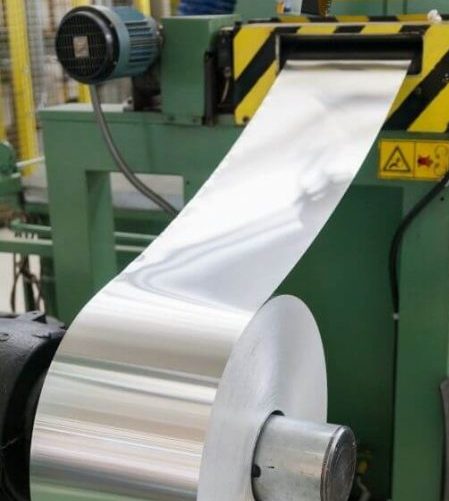Taking Full Advantage Of Efficiency and Quality With Cutting-Edge Steel Stamping Approaches
In the world of metal stamping, the search of functional excellence via the combination of innovative strategies is vital. As markets advance and needs for accuracy and efficiency increase, remaining ahead of the contour ends up being a strategic important. By embracing sophisticated modern technologies and process enhancements, businesses can unlock new levels of productivity and product top quality. The junction of sophisticated steel stamping techniques, automated systems, rigid high quality controls, and lean manufacturing concepts supplies an alluring glimpse right into the future of production. This merging holds the pledge of not simply meeting however exceeding industry standards, setting the stage for unrivaled performance and client fulfillment.
Advanced Metal Stamping Technologies
In the realm of steel marking, the assimilation of advanced innovations has actually revolutionized the market, enhancing accuracy and effectiveness in producing processes - Metal Stamping. Advanced metal marking modern technologies have played a crucial role in raising the capacities of manufacturers, enabling even more detailed layouts and greater production speeds
Among one of the most considerable improvements in metal marking modern technology is the execution of computer system mathematical control (CNC) systems. CNC systems make it possible for exact control over the marking procedure, leading to accurate and consistent manufacturing of complicated components. Furthermore, using servo presses has actually produced improvements in power efficiency and minimized cycle times, better optimizing the manufacturing process.
In addition, the integration of automation and robotics has streamlined metal marking procedures by enhancing performance and decreasing the risk of mistakes. Automated systems can perform jobs with speed and precision, causing enhanced general efficiency in the assembly line.
Automated Processes for Performance
Usage of automated processes in steel stamping procedures has significantly boosted performance and efficiency in manufacturing centers (Metal Stamping). Automated systems have actually transformed the steel marking industry by streamlining procedures, decreasing manual treatment, and minimizing the margin of mistake. These automated services incorporate a variety of innovations, including robot arms, CNC makers, and computerized control systems, that work cohesively to perform detailed stamping tasks with precision and rate
One main benefit of automated processes in metal stamping is the regular quality they provide. By removing human error and variations in production, automated systems ensure that each stamped component meets specific requirements with minimal problems. Furthermore, automation enables constant procedure, significantly decreasing downtime for tool adjustments and upkeep, thereby making best use of overall efficiency.
Furthermore, automated procedures improve safety and security in steel stamping operations by lessening the demand for manual handling of hefty materials and sharp tools. This not just safeguards workers but likewise contributes to a more efficient and streamlined process. Finally, the combination of automated procedures in steel see this site marking operations is critical for achieving ideal performance, top quality, and safety requirements in contemporary production environments.
Quality Assurance Measures in Marking
Provided the focus on constant high quality and performance attained via automated processes in metal marking procedures, implementing robust quality control steps ends up being crucial to guarantee and maintain criteria accuracy in stamped components. Quality control in steel marking involves a multi-faceted technique to guarantee the integrity and precision of the final items. By integrating these actions into metal marking operations, makers can consistently produce top notch stamped parts that satisfy the rigorous requirements of contemporary sectors.
Enhancing Accuracy Through Technology
To achieve unequaled accuracy in steel marking procedures, introducing developments are continually being established and incorporated into the production workflow. Advanced modern technologies such as laser reducing systems and computer system mathematical control (CNC) equipments have actually revolutionized the means metal elements are marked with utmost precision. By using laser reducing innovation, makers can achieve complicated and complex styles with micron-level precision, making certain that each stamped component fulfills the most strict top quality requirements.

Additionally, using simulation software program permits suppliers to assess and maximize marking processes before actual production, determining prospective locations for enhancement and make improvements criteria to accomplish optimum precision. By accepting these cutting-edge innovations, manufacturers can improve precision, rise performance, and deliver high-grade stamped products that meet one of the most rigorous needs of modern sectors.
Carrying Out Lean Production Practices
Integrating lean manufacturing techniques into metal marking procedures can cause streamlined production processes and increased overall efficiency. By concentrating on eliminating waste, optimizing sources, and constantly improving processes, steel marking companies can enhance efficiency and quality while decreasing prices. One crucial element of implementing lean manufacturing in metal stamping is the emphasis on creating a smooth and efficient process. This includes organizing workstations, standardizing procedures, and reducing unnecessary motions to make the most of effectiveness.
Furthermore, lean production methods motivate a society of constant enhancement within the organization. By empowering staff members to determine and address inefficiencies, firms can make step-by-step adjustments that cause substantial efficiency site here gains gradually. Applying devices such as five, Kanban systems, and worth stream mapping can aid improve procedures, lower preparations, and improve general quality in metal marking processes.
Verdict
Finally, the use of advanced metal marking innovations, automated procedures, high quality control steps, technology for precision improvement, and execution of lean manufacturing techniques are crucial for maximizing efficiency and top quality in steel marking operations. These approaches make sure that items are created with accuracy, uniformity, and cost-effectiveness. By incorporating these innovative techniques, producers can remain affordable in the industry and fulfill the demands of consumers successfully.

Provided the emphasis on consistent quality and performance achieved via automated procedures in steel stamping operations, executing robust quality control actions becomes critical to ensure and maintain criteria accuracy in stamped components. Executing devices such as 5S, Kanban systems, and worth stream mapping can aid streamline procedures, lower lead times, and boost overall quality in metal stamping procedures.
In verdict, the application of sophisticated steel marking technologies, automated processes, quality control steps, technology for accuracy enhancement, and application of lean manufacturing techniques are important for optimizing efficiency and top quality in metal marking procedures.